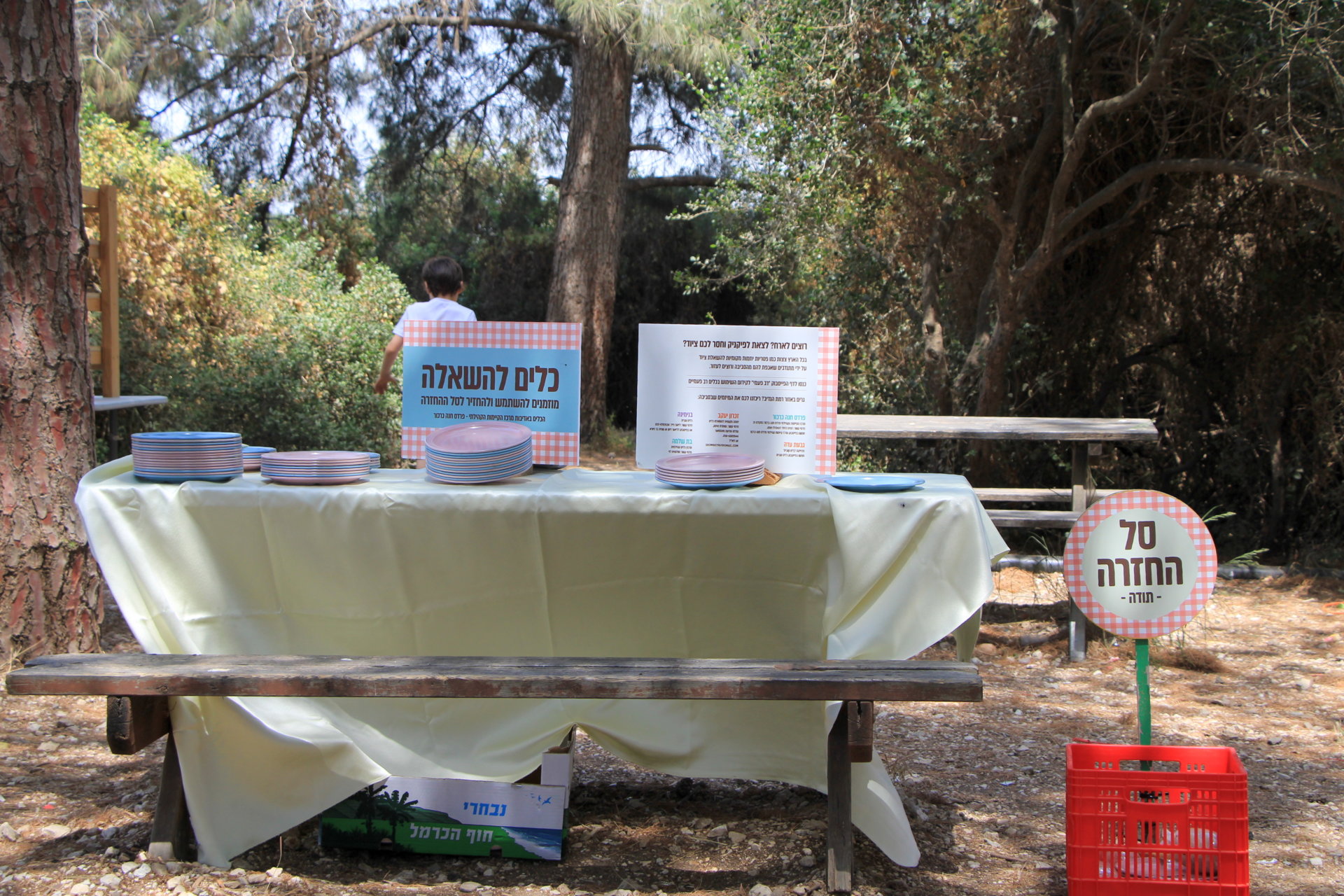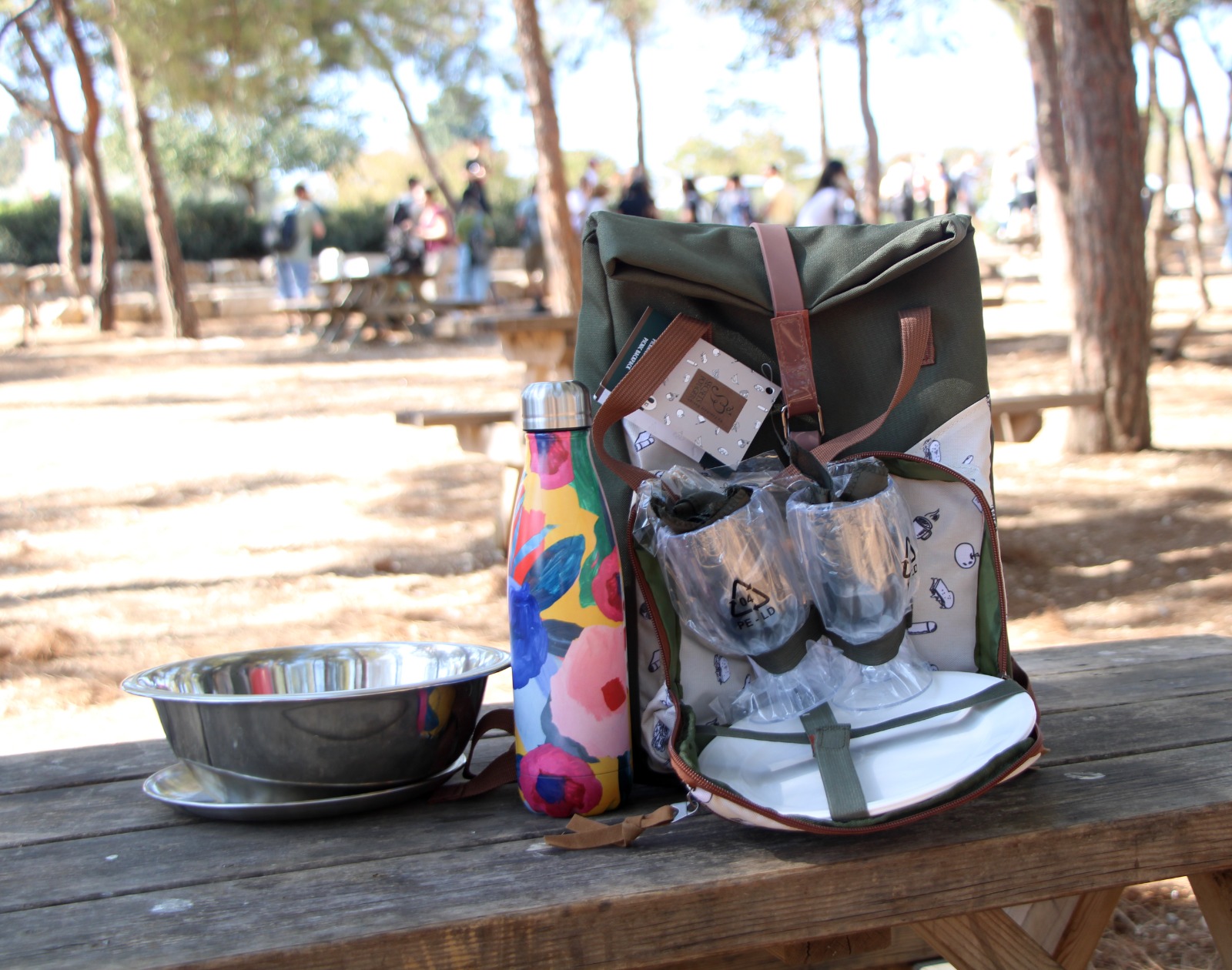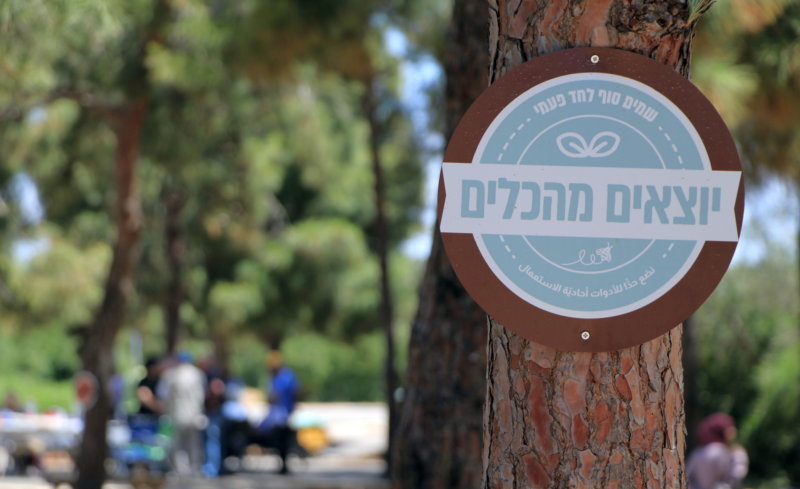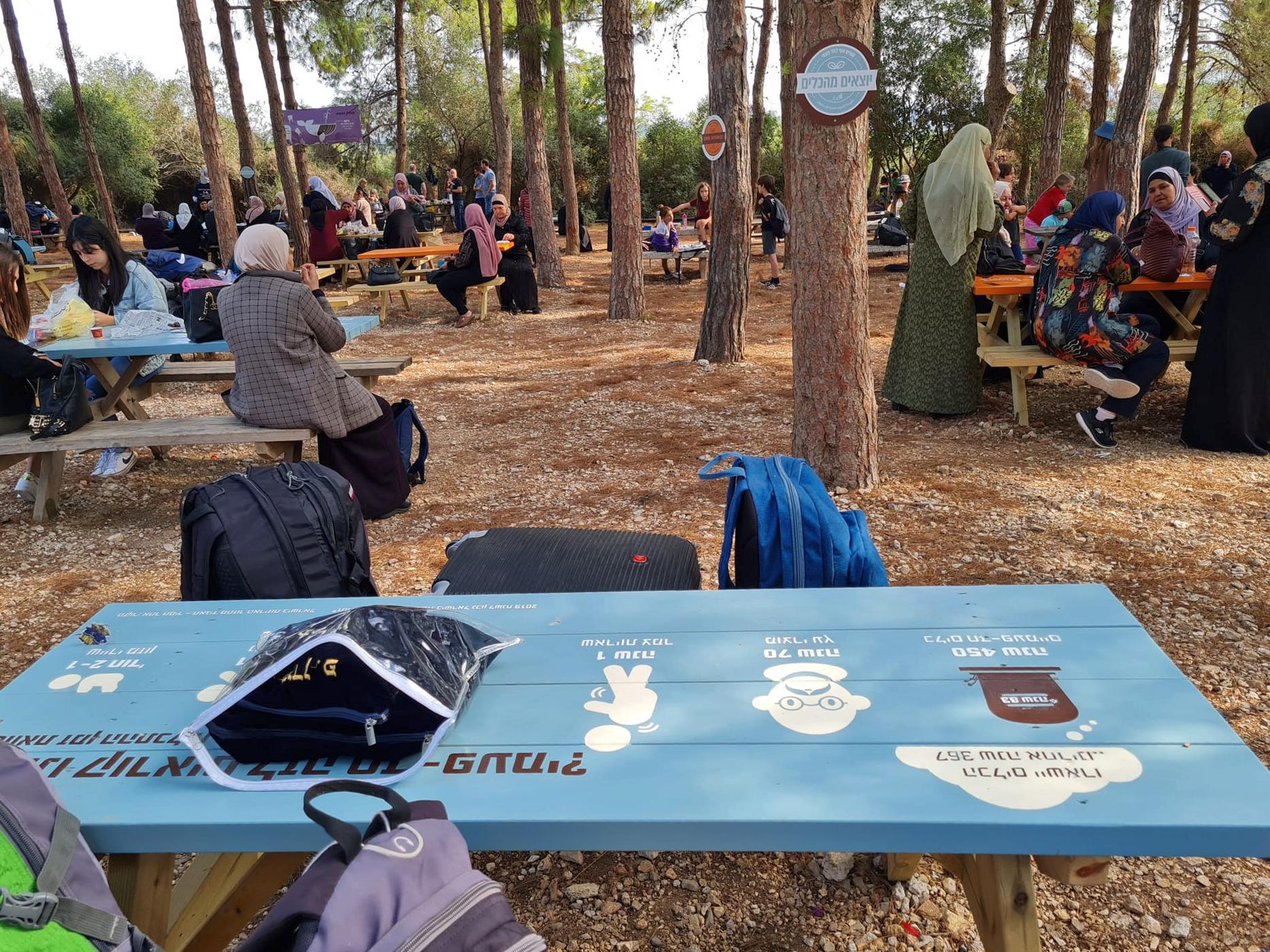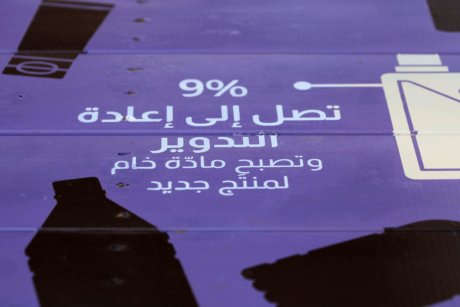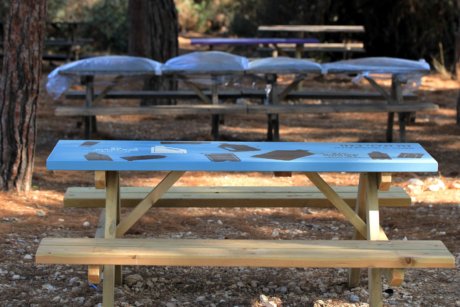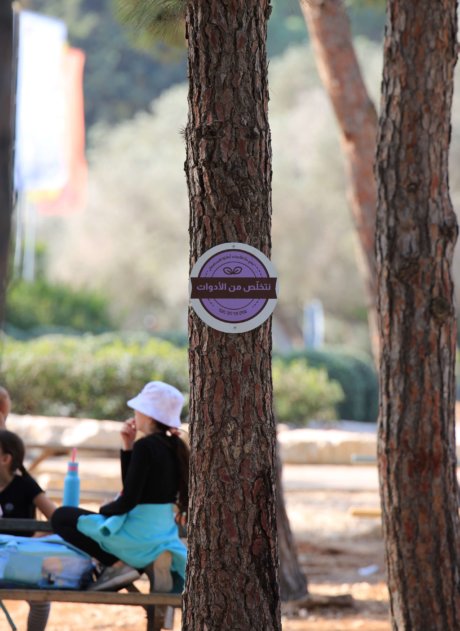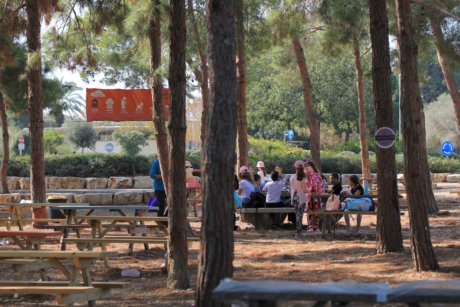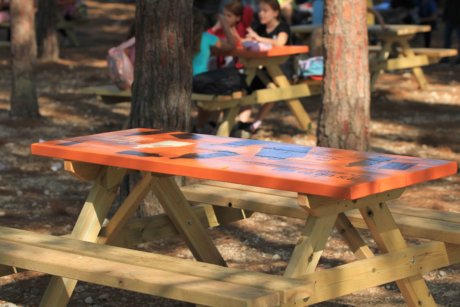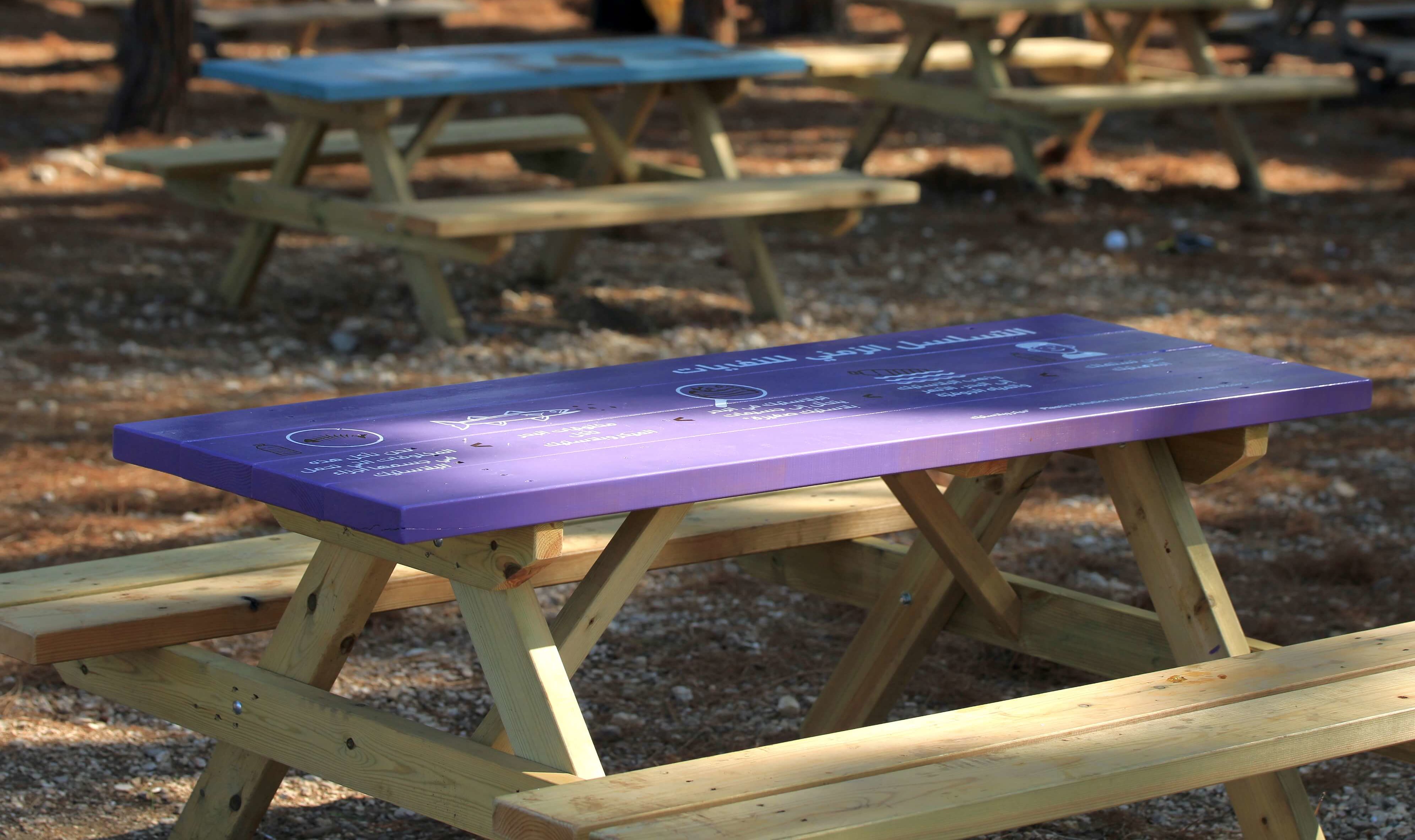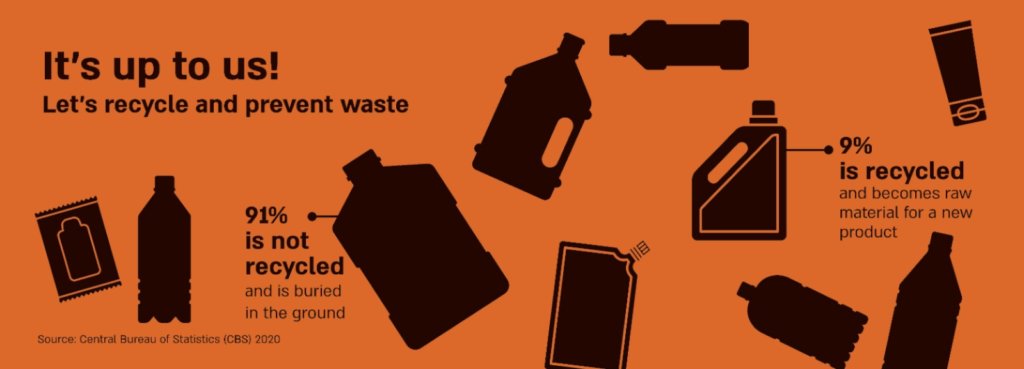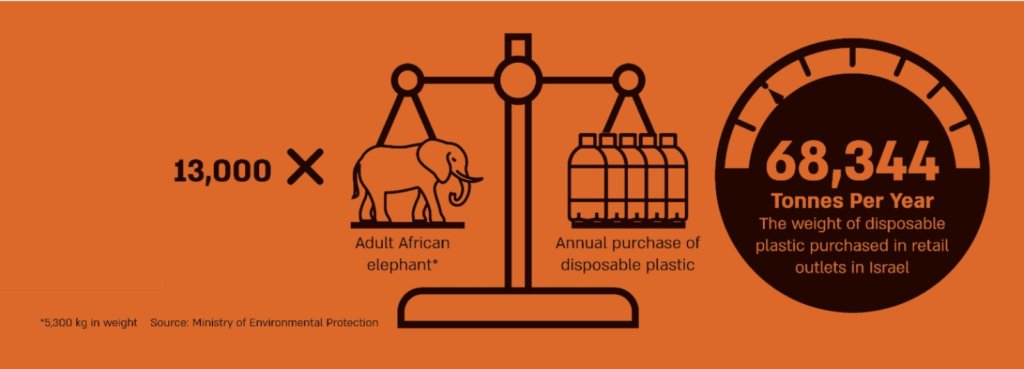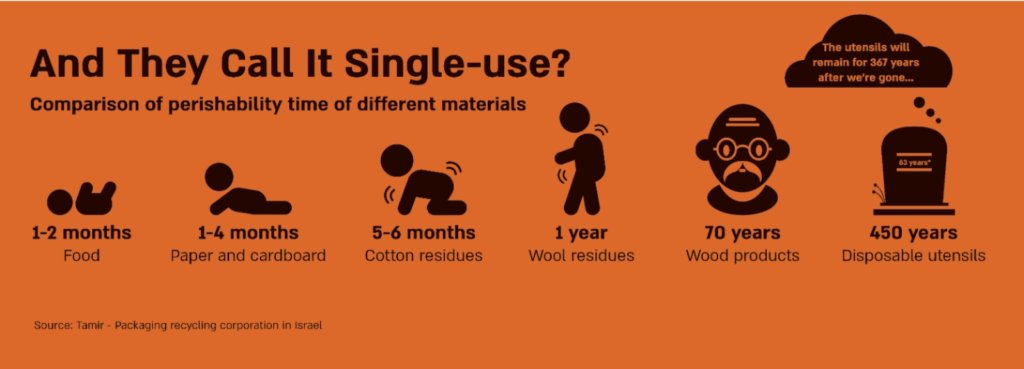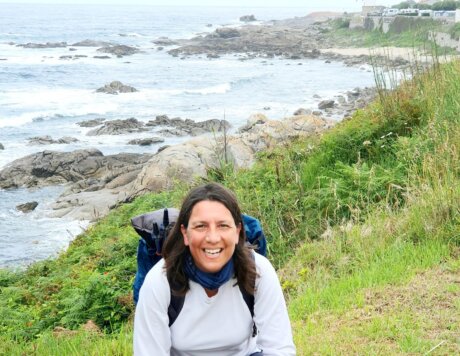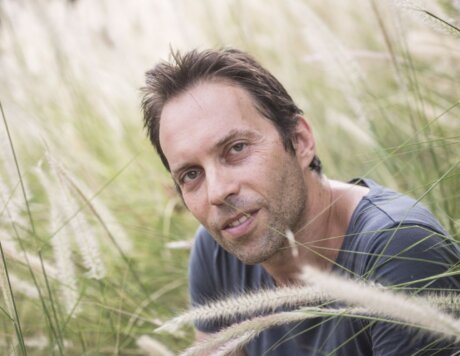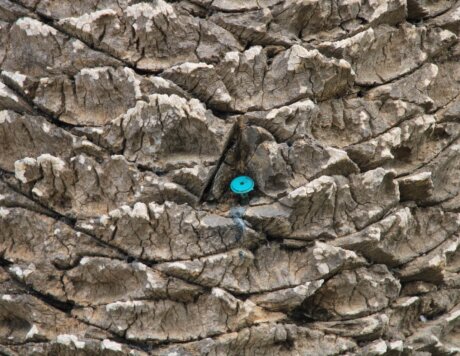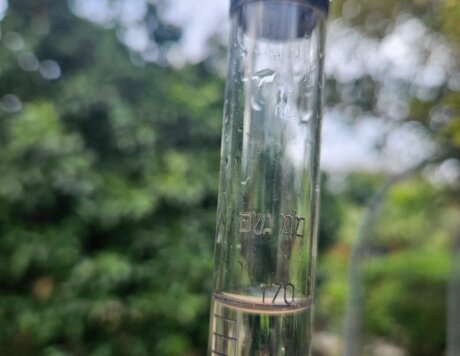So we drew on the tables
Shira Leon Zchout, Sustainability Manager at Ramat Hanadiv, read dozens of papers and selected the most significant facts related to the damage caused by disposables on our health, the environment, and our pockets. We think that any person who becomes familiar with them will think twice about every utensil that he/she uses only once.
Hadas Miron, previously the Infographics Manager at Calcalist, was asked to design and illustrate infographics to illustrate the facts.
Ilai Hason, industrial design student, talented artist, and resident of nearby Zichron Ya’akov, was recruited to produce the tables themselves.
Breaking the disposable habit in three languages
Just like all the signs at Ramat Hanadiv, here too, the message was conveyed in three languages – Hebrew, Arabic and English – where each language received a different colour for simple, quick identification of the entire series of tables and the information they display.


